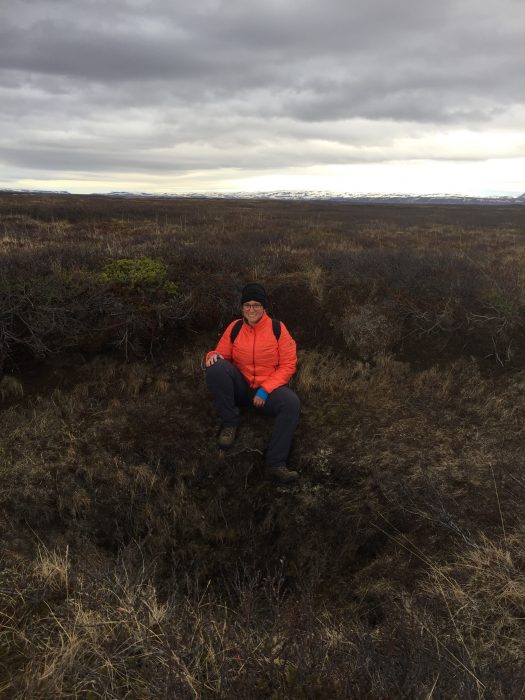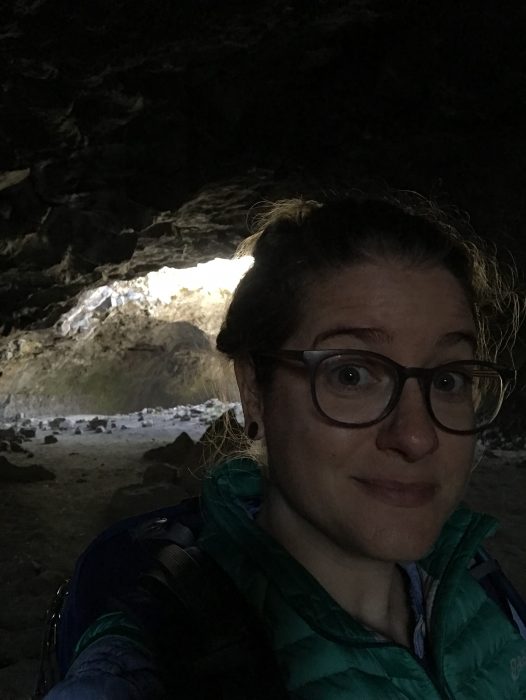Are we alone? Emily Martin may find the answer by studying ocean worlds in outer space
Emily Martin put her privilege to work as she discovered her own route to the outer edges of our galaxy.
![]() Emily Martin holds a soft spot in her heart for tiny Moscow, Idaho. “It’s a special little place,” she says, reminiscing about her college days at the University of Idaho, where she received a doctorate in planetary geology, or the geology of other celestial objects in the solar system. To many, Idaho might feel like a world away from Washington, D.C., but to Emily, it was an integral steppingstone on the path to where she is today: the National Air and Space Museum’s Center for Earth and Planetary Studies.
Emily Martin holds a soft spot in her heart for tiny Moscow, Idaho. “It’s a special little place,” she says, reminiscing about her college days at the University of Idaho, where she received a doctorate in planetary geology, or the geology of other celestial objects in the solar system. To many, Idaho might feel like a world away from Washington, D.C., but to Emily, it was an integral steppingstone on the path to where she is today: the National Air and Space Museum’s Center for Earth and Planetary Studies.
The myth of the Coastal Elite Academic
Reflecting on her own experience during her conversation with Eye on Science, Emily was quick to dismiss the archetype of the coastal elite academic scholar: “I don’t know anyone who said, ‘I have to go to an Ivy league school to get my Ph.D.,’” she said. “The first and foremost thing you’re thinking about is, ‘Who is doing research you’re interested in, [who you can study under]?’ Everything else is secondary.”
Today, Emily is the one doing the research. She studies geological faults and fractures on the moons of the Solar System’s outer planets—the gas giants. “It’s a specific niche, but it’s a really cool group of planetary bodies because they have, or once had, water under their surfaces,” Emily said. If you’re wondering why this is important, she explains:
“This isn’t the kind of scientific work that’s going to change your life—we’re not curing diseases or solving climate change or a humanitarian crisis,” she says. “But humans are explorers. We want to know where we came from and why we’re here. The bodies we’re studying are ocean worlds,”, Emily continues. “Any place that has liquid water is an exciting target for exploration because it can tell us how life formed, and if we’re alone.”
Emily’s journey to the Air and Space Museum did not start in a place the public associates with high-level physics. She attended Wheaton College in Massachusetts for her undergraduate studies, which is where she found the tools she needed to begin her career as a student of the night sky. “It was a small liberal arts college. Our physics department consisted of” (Emily begins counting off on her fingers) “an astronomer, a planetary geologist, an optical physicist, and a material scientist. Four faculty with diverse expertise.”

Emily Martin in Iceland (Photo courtesy of Emily Martin)
Finding her niche
How does one end up studying not the Earth, nor our Moon, nor the gas giants, but the moons of the gas giants? (Emily wasn’t overstating it when she said it’s a niche field.) “This is not a curriculum you usually get in high school, and if you’re not focused on it in college. It’s not a field of science you get a lot of training in.” But Emily indicated this is what bred some of her fascination with space. “Outer space continues to be a romantic and mysterious part of the place we live. We interact with it on a nightly basis, with the night sky right outside our window.”
Upon graduation, it took a few tries, but Emily ultimately figured out what she wanted to do. “I started in astronomy, but it wasn’t floating my boat. Looking at lots of squiggly lines and dots on a black screen all day wasn’t doing it for me.” She then discovered her interest in planetary geology, and she pursued an advanced degree at Northwestern, where, she said, they provided her the space to study what she was interested in. But it turned out Emily was still looking for something a little bit different, so she left Northwestern after earning a master’s degree. Finally, at the suggestion of a scientist she connected with at a conference, she applied to the University of Idaho.

Emily Martin explores a lava tube in Oregon (Photo courtesy of Emily Martin)
The University offered Emily a path forward into a career she wanted. When she was writing her dissertation (the last step of her Ph.D.), an opportunity presented itself that turned out to be the right move.
Emily’s partner moved to DC and her adviser went on sabbatical, and she decided she needed to start looking for something else to do besides sitting in her office all by herself. Her partner told her to try and get a desk at the National Air and Space Museum where she could finish writing her dissertation. (Pause for a second…have you ever tried calling a Smithsonian Museum and saying, “Hey, can I use one of your offices for myself, just for a little while?”) Well, Emily tried it. “They said, ‘Sure, we can set you up with a desk,’” Emily told Eye on Science.* She spent a year at the museum, and after she successfully defended her dissertation, she came back as a post-doctoral fellow. She’s been at the Museum ever since.
Saying yes to opportunity
To sum up her journey, Emily says, “You never know what kinds of opportunities will come from things you say ‘yes’ to. It’s valuable to be an advocate for yourself and to say, ‘yes’ because it will provide opportunities that you didn’t know were there.”
For Emily, “It took privilege, hard work, and privilege. I mean, who has the resources to just bail one place and go somewhere else? There’s a lot of privilege in grad school, when you’re being paid $10,000 a year and having no responsibilities. That’s when you can start saying ‘yes’ to things and being as strategic as you can.”

Emily Martin on a discovery flight in preparation for the Air/Space podcast. (Photo courtesy Emily Martin)
One responsibility Emily said “yes” to at the Museum was to co-host the AirSpace podcast. “The executive producer walked into my office one day and asked me if I’d like to do it.” Now, the podcast is on its eighth season and Emily says, “It’s been a really great opportunity to learn a lot of new things—we’re covering topics way outside my expertise. I get to meet a lot of new people.” She said it’s a great opportunity for her to flex her science communication muscles. “It’s part of my weekly to-do list and it’s my pride and joy.”
Don’t be afraid to ask
Emily insists that she received all the opportunities granted to her not just because she’s said “yes,” but also because she’s not afraid to ask for what she wants. “People can’t read your brain. If you don’t tell people that you have a need to be filled, they can’t fill it. A critical part of working your way through a career is to open dialogues about what you need to be successful. It’s not just dialogues with supervisors and bosses; rather, you need to build a community around you and ask your community for what you need when you need it. It’s not selfish, because you’ll turn around and fill other’s needs. It requires you to be more vulnerable, but it makes your job easier.”
___________________________
* Ed. note: Please don’t call the Air and Space Museum asking for office space!
Eye on Science, our new biweekly series, will shine a light on our vast and varied body of work by bringing Smithsonian science into sharper focus. Eye on Science will tell the stories of the people behind the research, the discoveries they make and their inspiration. We will explore their passions, celebrate their contributions, and look more closely at how questions become solutions that can inform environmental policy, spur technological innovation, and promote community and collaboration across the globe.
Posted: 14 February 2024
-
Categories:
Air and Space Museum , Education, Access & Outreach , Eye on Science , Feature Stories , Science and Nature







